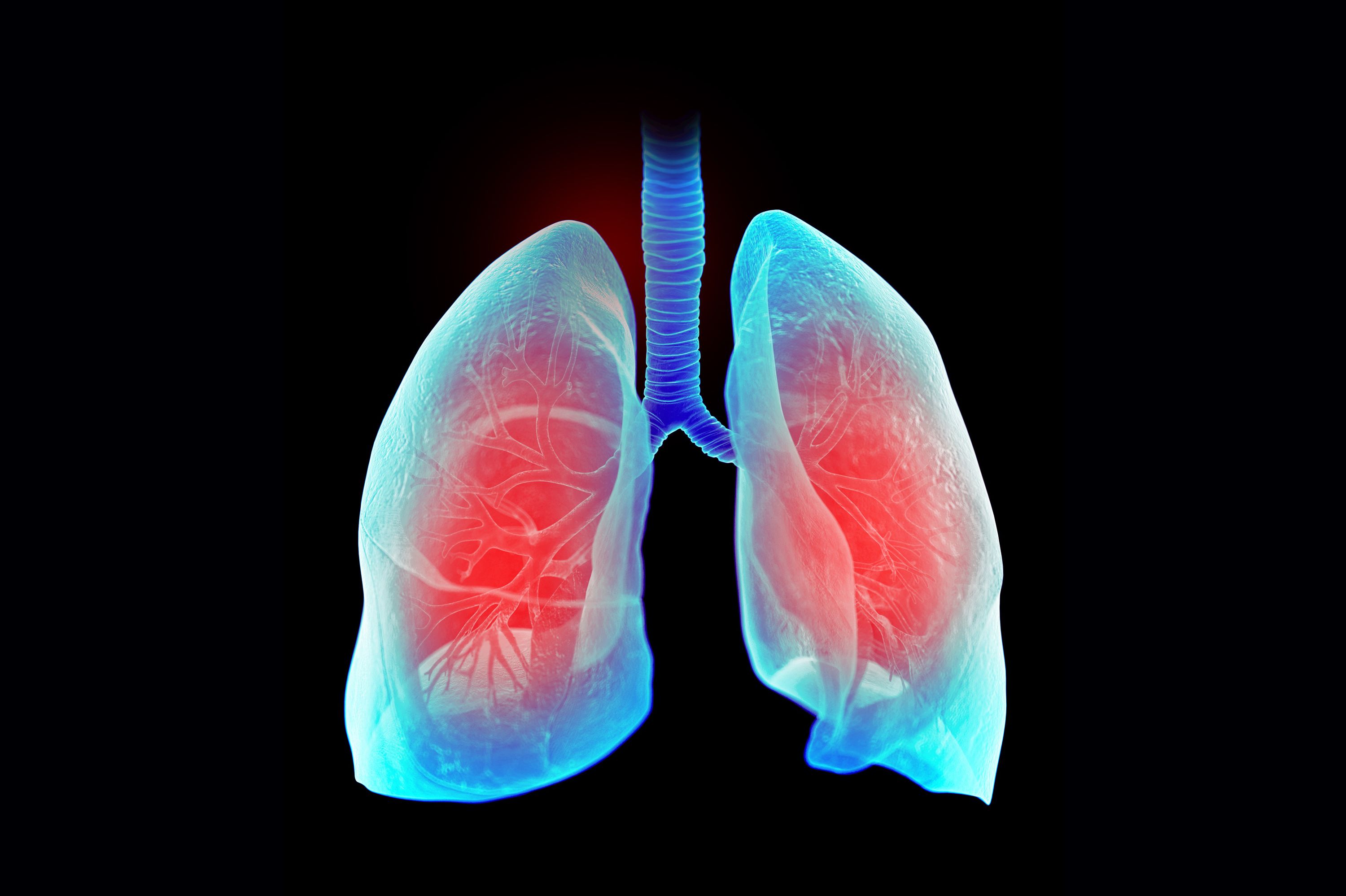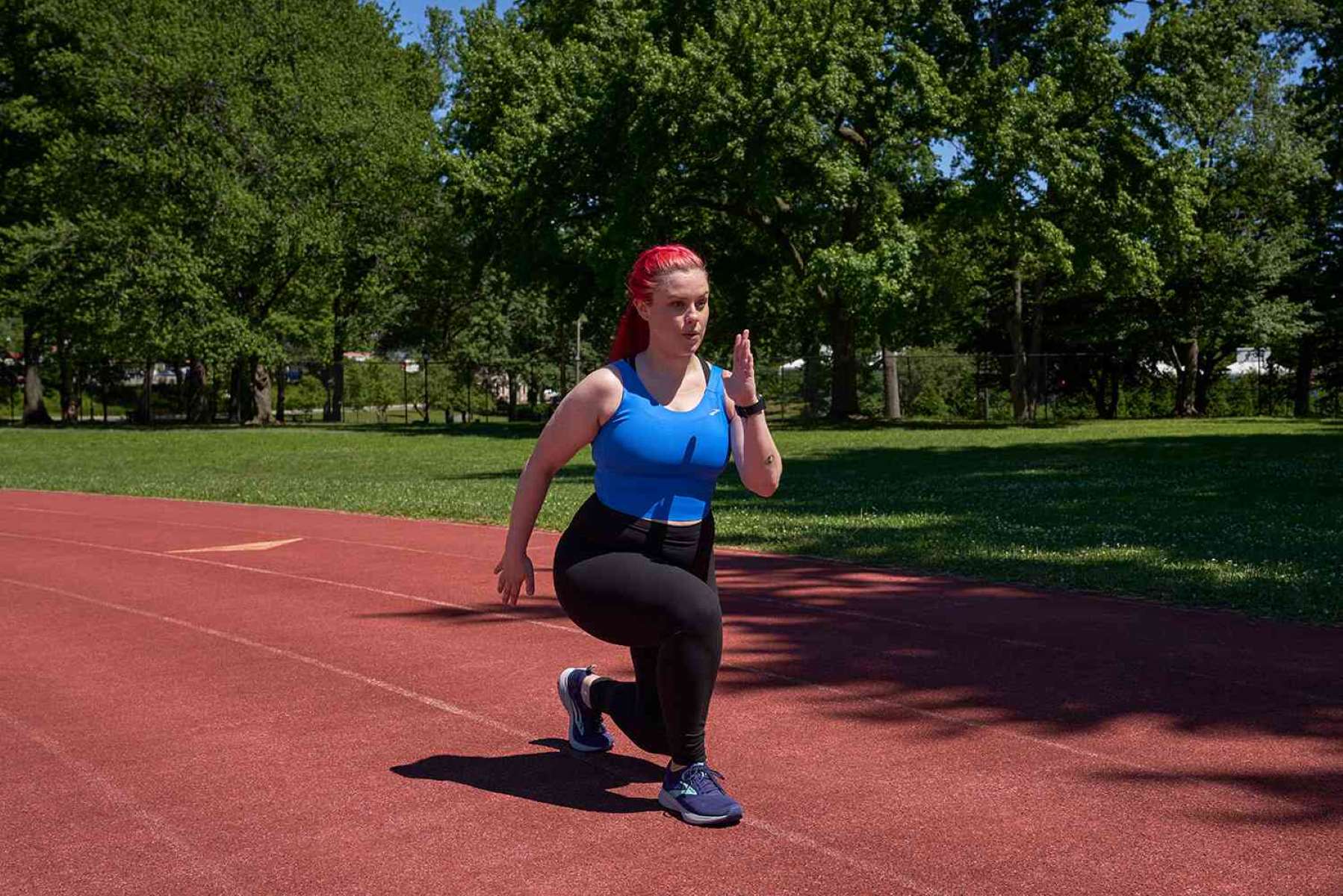

Featured
What Is Aerobic Endurance
Modified: August 21, 2023
Discover the importance and benefits of aerobic endurance training. Learn how to improve your cardiovascular fitness and achieve long-lasting results. Featured article.
Introduction
Aerobic endurance, also known as cardiovascular endurance or aerobic capacity, refers to the ability of the body to sustain prolonged physical activity that utilizes oxygen for energy production. It is a key component of fitness and plays a vital role in various sports and activities, from long-distance running and cycling to team sports like soccer and basketball.
Having good aerobic endurance not only allows individuals to engage in activities for longer durations but also enhances their overall stamina, performance, and overall health. It involves the efficient functioning of the cardiovascular and respiratory systems, as well as the muscles’ ability to utilize oxygen to produce energy.
Aerobic endurance is different from anaerobic endurance, which is the ability to perform short bursts of intense physical activity without relying on oxygen. While both types of endurance are important for overall fitness, aerobic endurance is particularly crucial for activities that require sustained effort over an extended period of time.
In this article, we will explore the definition of aerobic endurance, its importance, factors affecting it, the benefits of improving it, training methods, and tips to increase aerobic endurance. Whether you are an athlete looking to improve your performance or simply want to enhance your overall fitness level, understanding and developing your aerobic endurance is a key step towards reaching your goals.
Definition of Aerobic Endurance
Aerobic endurance, also known as cardiovascular endurance or aerobic capacity, is a measure of the body’s ability to sustain prolonged physical activity that relies primarily on the aerobic energy system. This energy system utilizes oxygen to generate energy needed to fuel the muscles during exercise. Aerobic endurance is determined by a combination of factors, including cardiovascular and respiratory efficiency, muscle strength, and overall fitness level.
During aerobic activities such as running, swimming, or cycling, the body requires a continuous supply of oxygen to meet the energy demands of the working muscles. The heart pumps oxygenated blood to the muscles, while the lungs provide a fresh supply of oxygen and remove carbon dioxide, a waste product of energy production. With improved aerobic endurance, the body becomes more efficient in delivering oxygen, removing waste products, and sustaining physical activity over a prolonged period of time.
The key indicator of aerobic endurance is the maximum oxygen consumption, commonly referred to as VO2 max. VO2 max represents the maximum amount of oxygen that an individual can utilize during intense aerobic exercise. It is measured in milliliters of oxygen per kilogram of body weight per minute (ml/kg/min). The higher the VO2 max, the better the individual’s aerobic endurance.
In order to determine an individual’s aerobic endurance level, they may undergo a VO2 max test, which involves performing progressively intense exercises while their oxygen consumption is measured. This test provides valuable information about an individual’s cardiovascular fitness and helps tailor training programs to improve aerobic endurance.
Aerobic endurance can also be expressed in terms of the time or distance an individual can sustain a given activity without experiencing significant fatigue. For example, a long-distance runner with good aerobic endurance may be able to sustain a steady pace for hours, while someone with poor aerobic endurance may quickly fatigue and have to slow down or stop.
In summary, aerobic endurance is the body’s ability to sustain prolonged physical activity that relies on the aerobic energy system. It is influenced by various physiological factors and can be measured using indicators such as VO2 max. Developing and improving aerobic endurance is essential for optimizing performance in endurance-based activities and improving overall fitness levels.
Importance of Aerobic Endurance
Aerobic endurance is a crucial component of overall fitness and has numerous benefits for both athletic performance and general health. Here are some key reasons why aerobic endurance is important:
- Enhanced cardiovascular health: Regular aerobic exercise strengthens the heart muscle, improves blood flow, and lowers resting heart rate and blood pressure. This reduces the risk of cardiovascular diseases such as heart attack, stroke, and high blood pressure.
- Increased stamina and endurance: Improving aerobic endurance allows individuals to perform physical activities for longer durations without experiencing fatigue. Whether it’s running a marathon, hiking for hours, or participating in team sports, enhanced endurance enables individuals to maintain a higher level of performance.
- Improved energy levels: Aerobic exercise stimulates the release of endorphins, which are natural chemicals that boost mood and energy levels. Regular aerobic activity can help combat feelings of fatigue and promote overall feelings of well-being.
- Weight management: Aerobic exercise burns calories and contributes to weight loss or weight maintenance. By engaging in activities that increase heart rate and metabolism, individuals can achieve and maintain a healthy body weight.
- Enhanced mental health: Aerobic exercise is not just beneficial for the body, but also for the mind. It can reduce feelings of stress, anxiety, and depression, and improve cognitive function and overall mental well-being.
- Increased lung capacity: Regular aerobic exercise improves lung function and capacity, allowing for better oxygen exchange and increased air flow. This can benefit individuals in daily activities as well as in demanding physical activities.
- Reduced risk of chronic diseases: Engaging in regular aerobic exercise has been linked to a decreased risk of developing various chronic conditions, including type 2 diabetes, certain types of cancer, and osteoporosis.
Overall, having good aerobic endurance not only enhances physical performance but also improves overall health and quality of life. It is a vital component of any well-rounded fitness routine and should be prioritized in training programs for athletes and individuals seeking to improve their fitness levels.
Factors Affecting Aerobic Endurance
Aerobic endurance is influenced by a combination of physiological, genetic, and lifestyle factors. Understanding these factors can help individuals identify areas for improvement and develop strategies to enhance their aerobic endurance. Here are some key factors that affect aerobic endurance:
- Cardiovascular fitness: The efficiency of the cardiovascular system, including the heart, blood vessels, and blood, plays a significant role in aerobic endurance. A strong and healthy cardiovascular system can deliver oxygen-rich blood to the working muscles more efficiently, allowing for sustained physical activity.
- Respiratory capacity: The lungs’ ability to take in oxygen and remove carbon dioxide from the body affects aerobic endurance. Individuals with larger lung capacity and efficient oxygen exchange can supply more oxygen to the muscles during exercise.
- Muscular strength and endurance: The strength and endurance of the muscles involved in the activity impact aerobic endurance. Well-developed muscles can sustain activity for longer periods without fatigue, contributing to improved aerobic endurance.
- Body composition: An individual’s body composition, including their percentage of body fat and muscle mass, can affect aerobic endurance. Excess body fat can increase the energy demands on the body during exercise, potentially reducing endurance.
- Training status: Regular aerobic exercise and training can significantly improve aerobic endurance over time. Consistently engaging in activities that challenge the cardiovascular system and gradually increasing intensity and duration can lead to improvements in aerobic capacity.
- Genetics: Some individuals may have a genetic predisposition to higher aerobic endurance. Factors such as lung capacity, muscle fiber composition, and oxygen-carrying capacity of the blood can vary among individuals and influence their aerobic endurance potential.
- Diet and nutrition: Proper nutrition plays a crucial role in supporting aerobic endurance. Consuming a balanced diet that includes adequate carbohydrates for fuel, protein for muscle repair, and healthy fats for energy can optimize performance and endurance.
- Training program: The type, intensity, and duration of training can impact aerobic endurance. Structured training programs that include a mix of aerobic activities, interval training, and progressive overload can maximize endurance gains.
- Mental factors: Psychological factors such as motivation, focus, and mental resilience can influence aerobic endurance. Having a positive mindset, setting goals, and utilizing strategies for mental toughness can help individuals push through fatigue and sustain performance.
It is important to note that these factors are interconnected and can vary from individual to individual. By addressing these factors through targeted training, proper nutrition, and lifestyle choices, individuals can optimize their aerobic endurance and improve performance in endurance activities.
Benefits of Improving Aerobic Endurance
Improving aerobic endurance offers a multitude of benefits that go beyond just being able to sustain physical activity for longer periods. Whether you are an athlete looking to enhance performance or simply want to improve your overall fitness level, here are some key benefits of improving aerobic endurance:
- Enhanced physical performance: One of the primary benefits of improving aerobic endurance is an increase in overall physical performance. With better endurance, you are able to sustain physical activity at a higher intensity for longer durations, leading to improved performance in sports, workouts, and daily activities.
- Delayed onset of fatigue: As you improve your aerobic endurance, you will notice a delay in the onset of fatigue. This means you will be able to continue exercising or participating in activities without feeling exhausted or out of breath as quickly.
- Increased energy levels: Regular aerobic exercise improves cardiovascular health, increases blood flow, and stimulates the release of endorphins. This results in improved energy levels and a general sense of well-being throughout the day.
- Weight management: Aerobic exercise burns calories and helps in weight management. By engaging in activities that increase heart rate and metabolism, you can effectively burn calories, promote fat loss, and maintain a healthy body weight.
- Reduced risk of chronic diseases: Regular aerobic exercise has been linked to a decreased risk of chronic diseases such as heart disease, type 2 diabetes, high blood pressure, and certain types of cancer. The improved cardiovascular health and overall fitness associated with aerobic endurance can contribute to disease prevention.
- Improved cardiovascular health: By improving aerobic endurance, you strengthen your heart muscle and improve the efficiency of your cardiovascular system. This leads to lower resting heart rate, lower blood pressure, and reduced risk of heart-related issues.
- Mental health benefits: Aerobic exercise has been shown to have significant positive effects on mental health. Regular aerobic activity can reduce stress, anxiety, and symptoms of depression. It also improves mood, cognitive function, and overall mental well-being.
- Increased longevity: Studies have consistently shown that individuals with high levels of aerobic endurance tend to have longer lifespans. Regular aerobic exercise is associated with a reduced risk of premature death and age-related decline.
- Improved quality of life: Perhaps one of the greatest benefits of improving aerobic endurance is the overall improvement in quality of life. With increased stamina, energy levels, and mental well-being, individuals are able to enjoy and participate in various activities without limitations.
These benefits highlight the significance of aerobic endurance in improving physical health, mental well-being, and overall quality of life. By incorporating aerobic exercises and endurance training into your fitness regimen, you can reap these rewards and lead a more active and fulfilling life.
Training Methods for Aerobic Endurance
Improving aerobic endurance requires a structured training approach that gradually challenges and improves the cardiovascular and respiratory systems. Here are some effective training methods to enhance aerobic endurance:
- Long, slow distance (LSD) training: This method involves performing continuous, low-intensity aerobic exercises for an extended duration. Activities such as long runs, bike rides, or swims at a steady pace help build endurance and train the body to utilize oxygen efficiently.
- Interval training: Interval training alternates between periods of high-intensity exercise and periods of active recovery or lower intensity. This method challenges the cardiovascular system and improves aerobic capacity. Examples include sprint intervals, where you alternate between short bursts of maximum effort and short recovery periods, or Tabata workouts.
- Fartlek training: Fartlek, which means “speed play” in Swedish, involves combining periods of faster-paced running or other activities with periods of slower recovery. It adds variety to training, improves aerobic fitness, and simulates real-life conditions where effort levels may vary.
- Cross-training: Engaging in different aerobic activities helps prevent boredom, reduces the risk of overuse injuries, and allows you to target different muscle groups. Incorporate activities like swimming, cycling, rowing, or group exercise classes into your training routine to develop overall aerobic endurance.
- Hill training: Running or cycling uphill challenges the cardiovascular system and builds strength and stamina. Incorporate hill repeats or find hilly routes to improve aerobic endurance and leg strength.
- Progressive overload: Gradually increasing the duration, intensity, or frequency of your workouts challenges the body and promotes adaptations. Start with manageable workouts and progressively increase the workload to build aerobic endurance without risking overtraining or injury.
- Consistency: Consistency is key when it comes to improving aerobic endurance. Aim for regular aerobic exercise sessions, ideally three to five days per week, to build and maintain endurance levels. Even shorter, more frequent workouts can be effective.
- Listen to your body: Pay attention to your body’s signals and adjust your training based on how you feel. Rest and recovery are essential components of endurance training. Incorporate rest days into your routine, and don’t hesitate to scale back or modify workouts if you are experiencing excessive fatigue or pain.
Remember, the key to improving aerobic endurance is to gradually increase training intensity and duration while allowing adequate recovery. It’s essential to tailor your training program to your fitness level, goals, and any specific sports or activities you are training for.
Consulting with a fitness professional or coach can help you design a personalized training plan that targets your aerobic endurance goals and ensures safe and effective progress.
Tips for Increasing Aerobic Endurance
Improving aerobic endurance requires consistent effort and dedication. Here are some practical tips to help you increase your aerobic endurance:
- Start gradually: If you’re new to aerobic exercise or have been inactive for a while, start with shorter, low-intensity workouts and gradually increase the duration and intensity over time. This allows your body to adapt and minimize the risk of injury.
- Find activities you enjoy: Choose aerobic activities that you genuinely enjoy. This will help you stay motivated and make the training process more enjoyable. Whether it’s running, cycling, swimming, or dancing, find activities that bring you joy and incorporate them into your routine.
- Include a variety of workouts: Incorporate a mix of steady-state cardio, intervals, cross-training, and different aerobic exercises to challenge your body in various ways and prevent boredom. Variety helps stimulate different muscles and energy systems, leading to improved endurance.
- Set specific goals: Set achievable but challenging goals to keep yourself motivated and track your progress. Whether it’s completing a certain distance or time, participating in a race, or reaching a specific heart rate zone, having goals helps you stay focused and committed to improving your aerobic endurance.
- Monitor your intensity: Use heart rate monitors or perceived exertion scales to gauge your intensity level during workouts. This helps ensure you’re working within the appropriate heart rate zone for aerobic endurance training and enables you to adjust the intensity as needed.
- Practice proper breathing: Focus on deep, rhythmic breathing during aerobic exercise. Inhale deeply through your nose and exhale fully through your mouth, allowing for efficient oxygen exchange and facilitating endurance.
- Prioritize recovery: Allow your body sufficient time to recover and adapt to the demands of training. Incorporate rest days throughout the week and listen to your body’s signals for rest and recovery. This allows for muscle repair and growth, preventing overtraining and promoting long-term endurance improvements.
- Maintain a balanced diet: Fuel your body with a balanced diet rich in complex carbohydrates, lean protein, and healthy fats. Adequate nutrition provides the energy and nutrients needed for optimal aerobic endurance. Stay properly hydrated to support overall performance and recovery.
- Get enough sleep: Quality sleep is essential for proper recovery and overall health. Aim for 7-9 hours of uninterrupted sleep each night to support your body’s physiological and mental processes, allowing you to perform at your best.
- Stay motivated: Find ways to stay motivated and accountable. Join a training group, enlist a workout buddy, or use fitness apps and trackers to track your progress and set reminders. Celebrate your achievements and keep your focus on the long-term benefits of improving aerobic endurance.
Remember, consistency and patience are key when it comes to increasing aerobic endurance. It may take time, but with dedication and smart training, you can make significant improvements and enjoy the benefits of enhanced endurance in various aspects of your life.
Common Mistakes to Avoid in Aerobic Endurance Training
When it comes to aerobic endurance training, there are common mistakes that can hinder progress and potentially lead to injury or burnout. Avoiding these mistakes is essential for maximizing your training and achieving your aerobic endurance goals. Here are some common pitfalls to watch out for:
- Doing too much, too soon: It’s important to start gradually and allow your body time to adapt. Pushing yourself too hard, too soon can lead to overuse injuries, burnout, or loss of motivation. Gradually increase the volume and intensity of your workouts to avoid overwhelming your body.
- Skipping proper warm-up and cool-down: Neglecting to warm up before aerobic exercise and cool down afterward increases the risk of injury and can hinder recovery. Take the time to warm up with dynamic stretching and perform a cooldown with gentle stretches to prevent muscle tightness and promote blood flow.
- Reliance on one type of exercise: While it’s great to have a favorite aerobic activity, relying solely on one type of exercise can limit your overall endurance capacity. Incorporate a variety of activities, such as running, swimming, cycling, or rowing, to challenge different muscle groups and energy systems.
- Ignoring signs of overtraining: Overtraining can occur when you push your body beyond its capacity without allowing sufficient rest and recovery. Ignoring signs of overtraining, such as chronic fatigue, unexplained decreased performance, or persistent muscle soreness, can lead to overuse injuries and setbacks. Listen to your body and prioritize rest and recovery.
- Not paying attention to proper form: Maintaining proper form during aerobic exercise reduces the risk of injury and ensures optimal muscle engagement. Improper form can lead to imbalances and inefficient movement patterns. Consult a qualified fitness professional to learn the correct form and technique for your chosen activities.
- Neglecting strength training: While aerobic exercise is crucial for improving endurance, neglecting strength training can limit your progress. Strength training helps build muscle strength and power, which has a direct impact on endurance performance. Include regular strength training sessions to complement your aerobic workouts.
- Skipping rest and recovery: Rest and recovery are essential components of any training program. Without proper rest, your body cannot adapt and progress. Make sure to incorporate rest days into your routine, prioritize quality sleep, and listen to your body’s signals for rest and recovery.
- Not monitoring intensity: Training at the appropriate intensity is key to improving aerobic endurance. Avoid the mistake of always training at a high intensity or not pushing yourself enough. Utilize tools such as heart rate monitors, perceived exertion scales, or workout apps to monitor and adjust your intensity level for optimal results.
- Ignoring nutrition and hydration: Fuelling your body with proper nutrition and staying hydrated is crucial for optimal performance and recovery. Neglecting your nutrition and hydration can hinder your progress and lead to decreased endurance. Maintain a balanced diet and drink plenty of water before, during, and after your workouts.
- Sticking to a stagnant routine: Avoid getting stuck in a routine by regularly challenging yourself and introducing new exercises or workouts. Your body adapts to repeated stress over time, so it’s important to continually challenge it with new stimuli to continue improving your endurance.
Avoiding these common mistakes will help you optimize your aerobic endurance training and reduce the risk of setbacks or injuries. Building a solid foundation, listening to your body, and incorporating variety, rest, and proper nutrition will contribute to improvements in your aerobic capacity.
Conclusion
Aerobic endurance is a critical component of fitness that plays a vital role in various sports and activities. By improving aerobic endurance, individuals can enhance their physical performance, overall health, and quality of life.
In this article, we explored the definition of aerobic endurance, its importance, factors affecting it, and the benefits of improving it. We also delved into training methods, tips for increasing aerobic endurance, and common mistakes to avoid.
Developing aerobic endurance requires a structured approach that includes a variety of aerobic exercises, progressive overload, proper nutrition, and adequate rest. It is important to build gradually, listen to your body, and maintain consistency in your training regimen.
Improving aerobic endurance offers numerous benefits, such as enhanced cardiovascular health, increased stamina, improved energy levels, and reduced risk of chronic diseases. It also contributes to better mental health and overall well-being.
Remember, improving aerobic endurance is a journey that requires patience and dedication. Set specific goals, monitor your progress, and seek guidance from fitness professionals if needed. With consistent effort and the implementation of effective training techniques, you can elevate your aerobic endurance and unlock your full potential.







